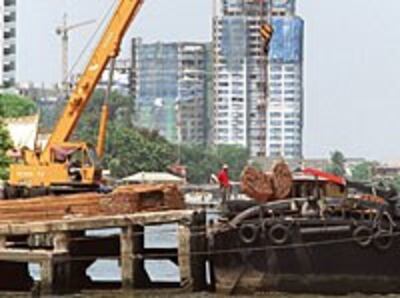
BANGKOK—Timber traders in Laos are still logging through “unofficial” channels despite new government curbs, a well-placed source in Laos has told RFA’s Lao service.
The source, who spoke on condition of anonymity, said the felling and exporting of black-market timber remained widespread. The source blamed systemic corruption among high-ranking officials of the ruling Communist Party.
“At the time that the black-market timber passes through a district, the relevant officials in that district must let it pass right through—if they don’t they will undoubtedly be punished,” the source said
In Laos, black-market timber is known as “timber with a patron,” in reference to a high-ranking official who can afford to ignore laws and regulations on its export.
Recently in Attapeu province as some mai mee kaen was on its way to Vietnam, an Attapeu forestry official asked to review the authorization papers, which displeased the owner of the timber...
"For example, recently in Attapeu province as some mai mee kaen was on its way to Vietnam, an Attapeu forestry official asked to review the authorization papers, which displeased the owner of the timber," the source said.
Drastic decline in forest cover
“Subsequently, there was an urgent official command for that official to move permanently to the education department within 24 hours. This incident created great fear in the rank-and-file of the relevant departments.”
Much of the illegally felled timber finds its way to neighboring China and Vietnam.
Lao forests have declined in density from around 70 percent of the land area in the 1950s to 47 percent in 1992. That percentage is now believed to have fallen below 40 percent.
Lao people have traditionally relied on their forests as non-commercial resources, providing timber for house-building, herbs for traditional medicines, and wild foods.
Veunvang Bouttalath, head of the Lao Forestry Department, has acknowledged publicly that illicit logging remains a major problem.
According to a recent World Bank report, deforestation remains a critical problem in Laos.
Some forests have been replanted several times as a result of fire damage and management failure, "and most performed poorly in strict economic terms."
Official cites new curbs
Forest cover “ranges from about 65-70 percent in the southernmost provinces to only 25 percent in some northern provinces. The largest and least disturbed blocks of forest are in the central and southern part of the country,” the report said. “Surveys suggest that this is being further reduced by an annual 53,000 hectares per year.”
Tamla Amkhathongkham, vice-governor of northeastern Houaphan province, said in a recent interview that Lao officials are working hard at preserving forest cover in Laos.
"Here in Houaphan province, we have...the long-leng tree [Podocarpus imbricatus]. The long-leng tree grows in the swamp bottoms. Now we protect them," he said.
The government "strictly forbids" the felling of live long-leng trees," he said.
Original reporting by RFA’s Lao service. Director: Viengsay Luangkhot. Executive producer: Susan Lavery. Written and produced for the Web in English by Luisetta Mudie. Edited by Sarah Jackson-Han.
